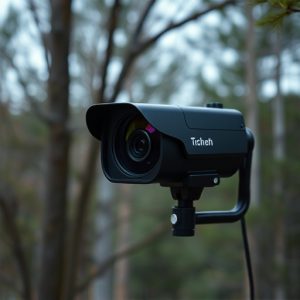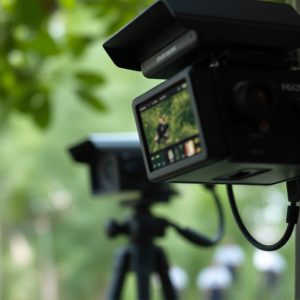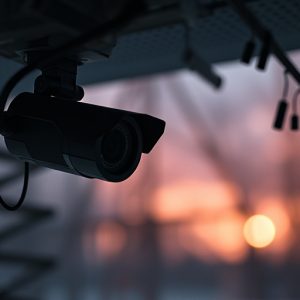Unveiling Spy Cameras: Advanced Scanning for Childcare Safety
The Spy Camera Childcare Safety Guide addresses the growing concern of hidden recording devices in c…….
The Spy Camera Childcare Safety Guide addresses the growing concern of hidden recording devices in childcare settings, emphasizing proactive safety measures. It highlights the ethical and legal implications of using spy cameras while providing best practices for device placement, staff-parent communication, and maintaining privacy. Through a combination of traditional inspections, advanced scanning techniques like metal detectors and thermal imaging, and AI integration, the guide ensures secure environments. Ethical considerations and legal frameworks, including parental consent and data protection, must be strictly followed to prevent abuse and maintain trust between caregivers, parents, and children.
Uncover the insidious world of hidden recording devices with this comprehensive guide on childcare safety. As spy cameras become increasingly sophisticated, ensuring a secure environment for children is paramount. This article explores advanced scanning methods to detect these clandestine devices, offering insights into both traditional techniques like visual inspections and modern tech-driven approaches. We delve into the ethical and legal aspects surrounding hidden recording device scanning, providing essential information for parents and caregivers in the digital age.
- Understanding Hidden Recording Devices: A Spy Camera Overview
- The Importance of Childcare Safety and Surveillance
- Traditional Detection Methods: Visual Inspection and Physical Searches
- Advanced Scanning Techniques: Using Technology for Hidden Device Identification
- Ethical Considerations and Legal Frameworks in Using Hidden Recording Device Scanning
Understanding Hidden Recording Devices: A Spy Camera Overview
Hidden recording devices, often referred to as spy cameras, are a growing concern in today’s digital age, especially in sensitive areas like childcare settings. These tiny, concealed cameras can be easily installed and left undetected, raising serious privacy and security issues. It’s essential for parents and caregivers to be aware of their presence, as they can capture intimate moments without consent, posing potential risks to children’s safety and well-being.
The Spy Camera Childcare Safety Guide highlights the need for proactive measures to counter this modern-day threat. Regular thorough searches and inspections of spaces where children gather, such as classrooms, play areas, and dormitories, can help identify hidden recording devices. Staying informed about the latest scanning methods and technology ensures that these devices are detected promptly, allowing for swift action to protect young minds and maintain a safe environment.
The Importance of Childcare Safety and Surveillance
Childcare settings, whether at home or in a center, require robust safety measures to protect young children. With increasing concerns about privacy and potential abuse, implementing hidden recording devices has become an essential aspect of childcare surveillance. The Spy Camera Childcare Safety Guide outlines best practices for using these tools effectively while ensuring the well-being of children and peace of mind for parents.
Hidden recording devices offer a level of monitoring that is both discrete and comprehensive. They can help identify potential safety hazards, such as neglect or abuse, and provide evidence in cases of dispute. However, their use must be carefully regulated to maintain transparency and respect for the privacy of all individuals involved, especially children. Proper placement, ethical considerations, and clear communication with staff and parents are crucial elements for a successful implementation of surveillance systems in childcare environments.
Traditional Detection Methods: Visual Inspection and Physical Searches
In the realm of childcare safety, ensuring a secure environment is paramount, and this often involves safeguarding against hidden recording devices. Traditional detection methods play a crucial role in identifying such clandestine equipment. Visual inspection, while seemingly straightforward, remains an effective first step. Caregivers and facility managers are trained to scrutinize spaces where spy cameras might be concealed—from small crevices to common hidden spots behind furniture or under surfaces. This initial assessment often uncovers visible signs of tampering or unusual objects that may indicate the presence of a hidden recording device.
Physical searches further enhance this traditional approach. Skilled professionals utilize specialized equipment and expertise to detect devices that might not be immediately apparent. These methods are particularly important in creating a comprehensive Spy Camera Childcare Safety Guide, ensuring staff and parents are equipped with the knowledge to recognize potential threats. By combining visual inspection and physical searches, childcare facilities can maintain a robust safety protocol, fostering an environment where every individual feels secure and protected.
Advanced Scanning Techniques: Using Technology for Hidden Device Identification
In the realm of childcare safety, where trust and transparency are paramount, advanced scanning techniques leveraging technology play a pivotal role in identifying hidden recording devices. Innovative tools such as specialized metal detectors and thermal imaging cameras have emerged as powerful allies in this quest for security. These technologies transcend conventional methods, enabling professionals to uncover clandestine spy cameras, often imperceptible to the naked eye. By integrating these advanced scanning techniques into childcare facilities, parents can rest assured that their children’s environments are free from lurking threats, such as those found in a Spy Camera Childcare Safety Guide.
The application of artificial intelligence (AI) and machine learning algorithms further enhances these scanning processes. These technologies can analyze vast datasets to recognize patterns indicative of hidden devices, thereby increasing accuracy and efficiency. This fusion of technology not only fortifies childcare safety measures but also underscores the importance of staying ahead of evolving methods used by unscrupulous individuals.
Ethical Considerations and Legal Frameworks in Using Hidden Recording Device Scanning
The use of hidden recording devices for childcare safety, often promoted in a Spy Camera Childcare Safety Guide, raises significant ethical and legal concerns. While these devices can serve as valuable tools to monitor and protect young children, their deployment must adhere to strict guidelines to ensure privacy and prevent abuse. The ethical considerations encompass the right to privacy, especially for minors, and the potential invasion of trust between caregivers and parents. Legal frameworks vary across regions, but they generally require explicit consent from parents or guardians before installing hidden cameras, clearly communicating the surveillance system’s presence, and ensuring data protection.
In many jurisdictions, there are strict penalties for unauthorized use, including fines and imprisonment, emphasizing the importance of legal compliance. Given the sensitive nature of childcare environments, professionals should prioritize open communication with families, offering transparent options for monitoring methods that respect both privacy and safety. Striking a balance between these factors is crucial to maintaining ethical standards in surveillance practices while ensuring the well-being of children under their care.
In a world where technology advances rapidly, hidden recording devices pose a unique challenge for childcare settings. This Spy Camera Childcare Safety Guide has outlined various methods, from traditional visual inspections and physical searches to advanced scanning techniques leveraging modern technology, to identify these concealed threats. As we navigate the ethical landscape surrounding their use, it’s crucial to stay informed about legal frameworks and prioritize the safety and well-being of children in our care. By adopting comprehensive safety measures, we can ensure a secure environment for kids, foster trust among parents, and maintain the highest standards of childcare quality.


